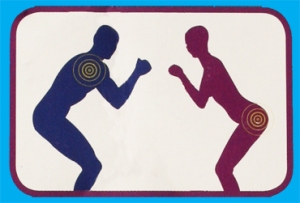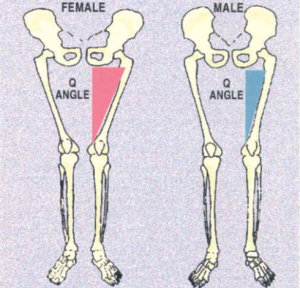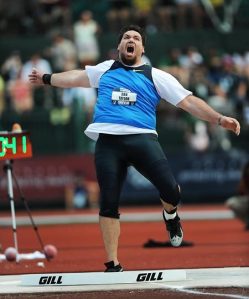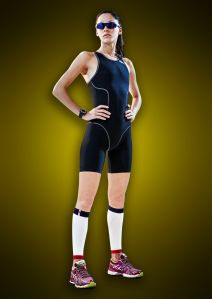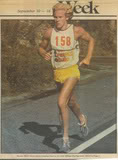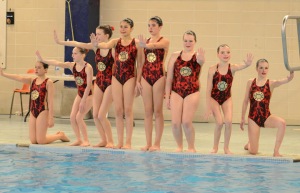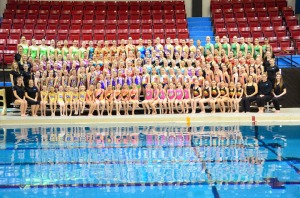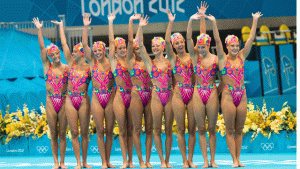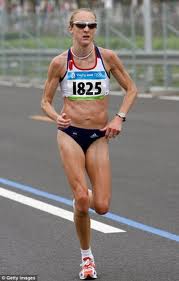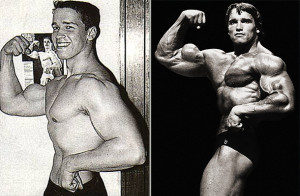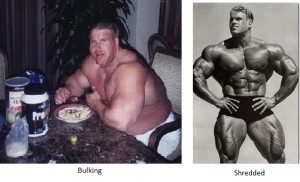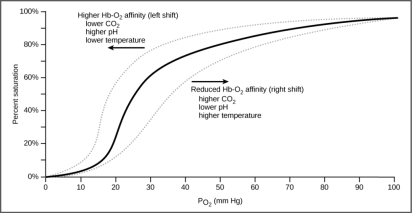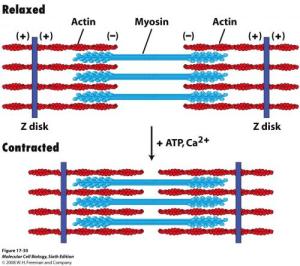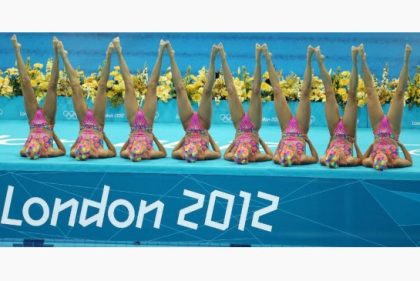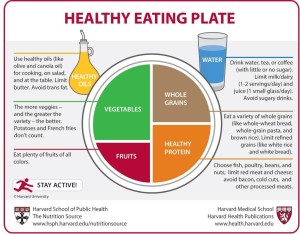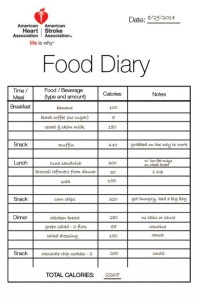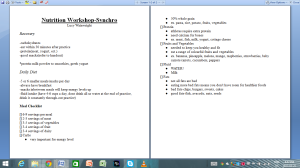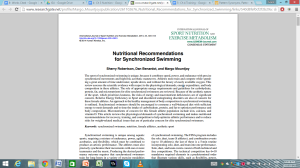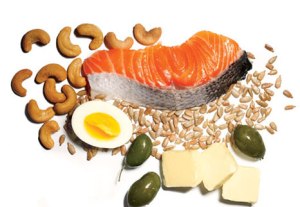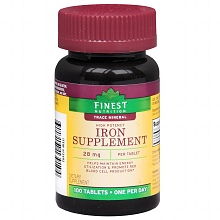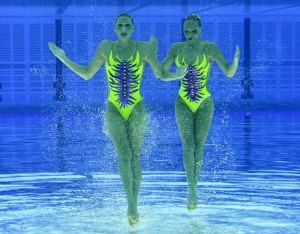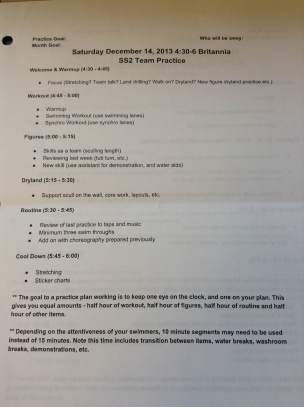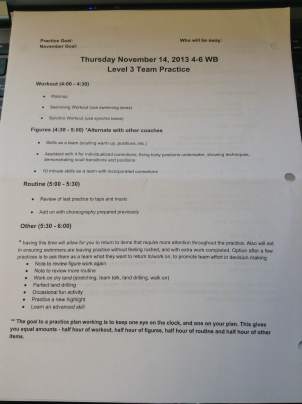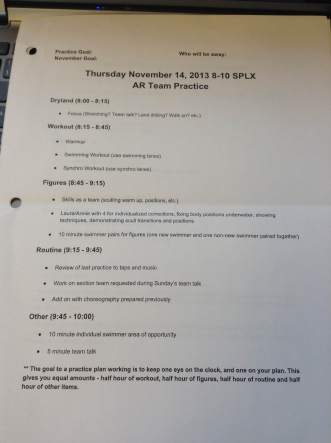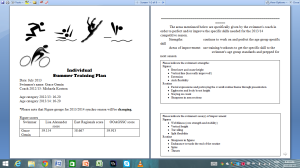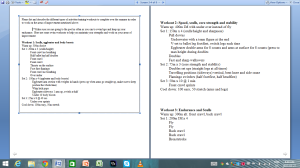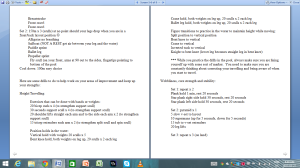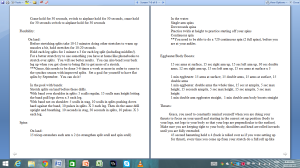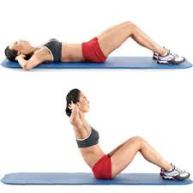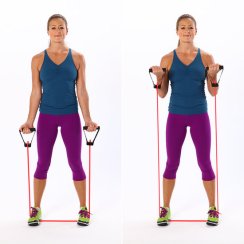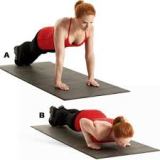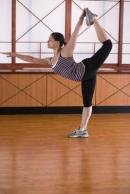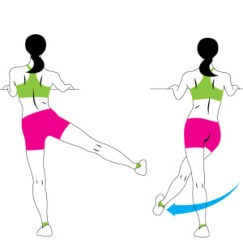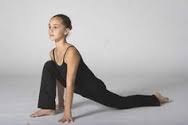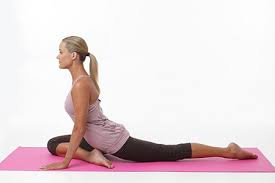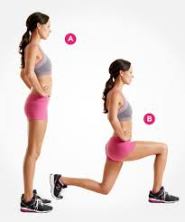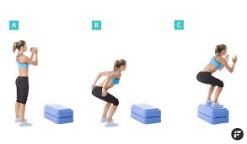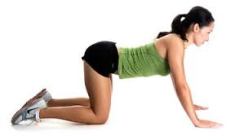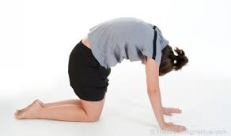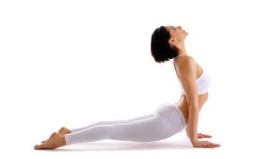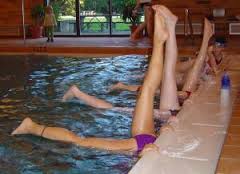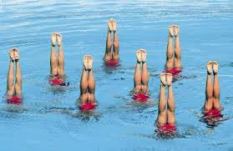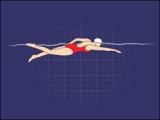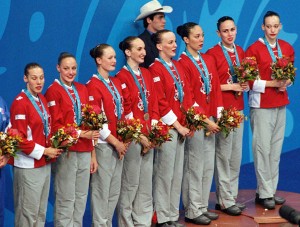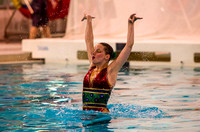“Can you imagine running for up to five minutes while performing acrobatics, holding your breath, looking graceful and having to keep in time to the music or your fellow athletes? No? Well welcome to the world of synchronised swimming!” (http://www.swimming.org/britishswimming/synchro/about-synchro/) Synchronized swimming as a sport is a combination of strength and flexibility to perform the routines, as well as rhythm, discipline to synchronise and ability interpret the music. (http://www.swimming.org/britishswimming/synchro/about-synchro/) You require a balance of stamina, flexibility, strength, grace, focus, and perseverance. All these different components of being a synchronized swimmer, or synchro swimmer, require a certain body build to have optimal success in the sport. “Bodies come in all shapes and sizes, but specific body types tend to favour specific sports” (Ruiz, F. (2005)). This can give some athletes with a specific body type an advantage over others. In this chapter we will be looking at the specific body type that is best suited for Synchro.
1.1 Why Females are Better Suited Than Males For Synchro
The differing factor for males and females are the sex hormones in their bodies. Females generally have higher levels of estrogen while males generally have higher levels of testosterone, though there are some exceptions to this generalization (http://www.yale.edu/ynhti/curriculum/units/1988/5/88.05.04.x.html). The estrogen in females causes them to have more body fat (http://www.livestrong.com/article/347443-athletic-differences-between-men-women/) which also helps females to be more buoyant in water with the proper fat to muscle ratio in their body (Harmon, K. (2011, May 10)). The estrogen in females also causes their joints to be more flexible giving them a greater range of motion which is required in synchro. (http://www.livestrong.com/article/347443-athletic-differences-between-men-women/) The female body structure also gives females an advantage over males since females have their centre of gravity below their navel whilst males have their centre of gravity above their navel which is where a lot of the movements that are meant to keep the athlete out of the water are done. (http://electron6.phys.utk.edu/101/CH2/center_of_mass.htm) Males have more weight in their shoulders and chest which means that the sculls that are meant to be supporting them are away from the section of their body that carries the most weight. Females on the other hand have more weight in their hips and buttock which is exactly where most of the supporting sculls that keep the athlete up are in synchro. (http://www.jeanniethoren.com/theory.html)
From: http://www.jeanniethoren.com/theory.html
The more heavily weighted sections of the male and female bodies
Females also have wider hips which affects the alignment and movement of the extremities. (http://www.livestrong.com/article/347443-athletic-differences-between-men-women/)
From: http://bretcontreras.com/training-women/
Female hip size compared to male hip size
1.2 Ideal Body Type for Synchronized Swimming
“Synchronized swimmers need to be strong, powerful, flexible, elegant and precise, says Jadine Cleary, domestic technical director for Synchro Canada and former national and Olympic team coach. Their body types resemble that of a dancer, with long legs and good extension, but they also need to be buoyant.” (Barker, J. (2012, August 7)) Studies that were conducted by Chinese researchers at the 1997 FINA World Cup showed that the Russian Synchronized Swimmers were the best equipped physically for the sport. The Russian swimmers were of average height (1165.2 cm) and weight (55.2 kg) and had a body fat composition of on average 19.83%. Along with these elements they also had broader shoulders, longer arms, and narrower pelvis breadth when compared with other country’s athletes. The mean value for the somatotype are 3.8-3.3-3.2. A somatotype measures how alike the 3 body types you are, the left number representing the degree of endomorphy, the middle number indicates the degree of mesomorphy, and the number on the right represents the degree of ectomorphy, on a scale of one to seven. Endomorphs are more on the gut dominant side while mesomorphs are more muscular and ectomorphs are more dominated by nervous and cerebral features. (http://www.mysomatotype.com/body-type/?page_id=58) The Russian team also placed Gold at the 1997 FINA World Cup, a success that was predicted by this research. (Quinn, E. (2014, December 1))
For the specific body types there are certain distinguishing characteristics between them. Table #1 below highlights the biggest differences between the three body types.
Table #1: Characteristics and Exercises for different Somatotypes
| Characteristic/ Exercise | Endomorph | Mesomorph | Ectomorph |
| Physical | Stout/round, strong bones | Muscular, athletic, broad shoulders, muscular limbs, narrow waist | Tall, lean, small chest, thin hips |
| Metabolic | Slower, excess body fat | Gains/loses weight easily | fast metabolism, slow muscle gain |
| Training Positives | Naturally strong, quick muscle gain | Resistance and aerobic training | naturally fit, loses weight easily |
| Training Negatives | Difficult to lose weight | Quickly over trains, needs variety in workouts | Slow to gain muscle, exercise might cause weight loss |
| Cardiovascular Exercises | Race walking/ swimming/rowing/ cycling (to avoid adding strain to joints), push ups, pull ups, | Sprinting, middle-distance events, 3-, 5-, 10-km races and 5- to 20-mile bike rides, interval training, shuttle runs, sprints, track workouts, triathlons | Long-distance running, cycling, pool swimming, |
| Strength Exercises | No information provided on https://experiencelife.com/article/just-your-type/ | Technique, balance, working all muscle groups, strict workout format, 3 days a week, weight-training exercises, focusing on muscles involved in sport, stretch | Work out frequently with heavy weights and low repetitions, can handle more training sessions per week, |
| Sports | Football, long-distance swimming, rowing, cross-country skiing, snowshoeing, | Bodybuilding, weightlifting, soccer, hockey, rugby | Marathons, triathlons, cross-country skiing, long-distance and endurance events, squash, tennis, indoor cycling, body sculpting, circuit training |
| Fibre Type | Mostly slow twitch | Fast twitch type 2A | Fast twitch |
(Ruiz, F. (2005))
http://www.precisionnutrition.com/all-about-body-type-eating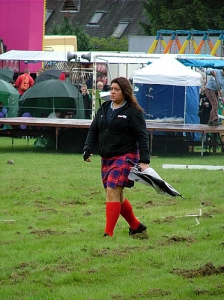
http://www.gofitnow.com/tag/weight/
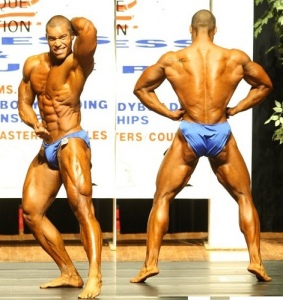
http://www.machinemuscle.com/are-you-an-ectomorph-mesomorph-or-endomorph-find-out-now/
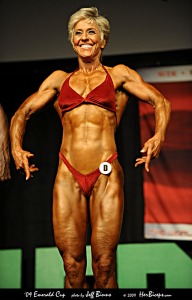
http://ownbond.com/the-process-of-female-bodybuilding/
http://www.220triathlon.com/training/how-to-build-the-ultimate-triathlete/9704-6.html
Visual of endomorph, mesomorph, and ectomorph body types in both male and female athletes. From top: Male shotputter, Female shotputter, male body builder, female body builder, male triathlete, Female triathlete
Looking at this table and these pictures it makes the most sense for a synchronized swimmer to be a mix of all the different body types. Synchronized swimmers need to have the strong bones and excess body fat from endomorphy, muscular limbs, technique, speed and balance from mesomorphy, and the height, natural fitness, and ability to recover quickly between workouts from ectomorphy. That is why the Russian swimmers are the best built to be synchronized swimmers with their mean values for the somatotype being 3.8-3.3-3.2 on the scale of one to seven. Synchronized swimmers need to have the perfect balance between body fat and muscle mass to not have too much difficulty floating whilst still having enough muscle to support themselves in the water. (http://www.mysomatotype.com/body-type/?page_id=58)
1.3 Recreational Synchronized Swimming Body Type
“It’s friendly, being suitable for all body types, all skill levels, and both sexes” (Glass, T., Devana, S., Cronin-Schlote, C., Morrow, W., & Wood, L. (2005)). The recreational program for synchronized swimming is generally run with the mentality of fun and that anyone is welcome. They practice a lot less than the competitive teams and focus more on the fun aspect and building the love for the sport in swimmers. (Glass, T., Devana, S., Cronin-Schlote, C., Morrow, W., & Wood, L. (2005)). Here in Ottawa there is a club called Nepean Synchro Swim Club and they have six different classes offered in their recreational program ranging from Synchro Squirts, for ages 7-8, to Advanced Rec, for girls ages 13-18 and have been swimming for two or more years. These different levels create the opportunity for youth of any age to participate in the sport and are designed to be adaptable to any body type. It is a program that welcomes everyone and doesn’t require any specific body type to be able to participate. Recreational is all about having fun, getting kids involved in synchronized swimming, developing their love for the sport, and giving youth a community that they can be a part of. (http://www.nepeansynchro.com/2014-15-recreational-season/program-info-2014-2015-1)
Here is an example of what the difficulty and skill level is in the recreational program. This is one of the Advanced Recreational teams from Nepean Synchro at the 2015 Rec Meet hosted by Nepean Synchro at Brewer Pool.
One of the recreational teams from Nepean Synchro from the 2013-2014 season at the 2014 Rec Meet, level 4, ages 10-15
1.4 Provincial Synchronized Swimming Body Type
The provincial stream is slightly different in the sense that the level of commitment and the physical demand on the participants are higher than that of the recreational program. The same club that was mention while discussing the recreational program has a different philosophy for the competitive program. Their mission is to “Enhance the physical, social and emotional development of our swimmers through participation in synchronized swimming as a team sport within the provincial stream.” (https://docs.google.com/viewer?a=v&pid=sites&srcid=ZGVmYXVsdGRvbWFpbnxuZXBlYW5zeW5jaHJvMXxneDoyZDg5MTJlODhhYmUyMmM1). Competitive is more about the athlete development as opposed to the fun aspect of the recreational program. In competitive the workouts, in and out of the pool, the routines, and the goals are much more difficult and much more physically demanding. To succeed in the competitive program you need a body structure that is closer to that of the Russian Olympic swimmers mentioned in section 1.2 with their somatotypes being 3.8-3.3-3.2. The competitive swimmers won’t have the same body fat or muscle development but if they have a similar body somatotype to that of the Russian Swimmers then they will have an advantage over the competition who might not have the same body structure. Competitive synchro can still be performed and excelled in by those without this body type. There are many girls in the sport that have a higher degree of endomorphy, mesomorphy, or ectomorphy than stated in the desired somatotype and are still highly successful. (http://www.mysomatotype.com/body-type/?page_id=58) This is a routine performed by the first place team in Ontario in 2014, from Nepean Synchro, to give you an idea of the difficulty and skill level of the routine and the athletes.
Nepean Synchro, recreational and competitive swimmers from the 2013-2014 season along with coaches
1.5 Olympic Synchronized Swimming Body Type
Olympic swimmer on the other hand have a very specific body type that is required to be eligible for the Olympic team. They require the somatotype of 3.8-3.3-3.2 or something very close to it along with the lower body fat and higher muscle development to excel at their level of elite athleticism. The balance of body fat to assist with floating, the muscle development to assist with suspension in the water and the leanness of the athlete to assist with the illusion of height all contribute to the overall success of the athlete. It is this balance that genetically gives certain athletes an advantage over others which occurs in every sport. (http://www.mysomatotype.com/body-type/?page_id=58) Olympic athletes train a significant amount more than the competitive teams and have a much more restricted guideline as to who is able to be on the Olympic team. The athletes are usually required to fit certain criteria and are expected to be fully committed, mind and body. The athletes are required to be at a certain level of physical fitness in order to excel at the Olympic level and having a particular body type assists some swimmers excel more than others.
(http://www.synchro.ca/e/nat_team/documents/AthleteExpectationsandResponsibilities.pdf.pdf)
Here is an example of an Olympic level team swimming. This is the North Korean team at Incheon 2014.
From:http://www.sportsnet.ca/more/danchenko-training-canadas-synchro-swimmers/
Canadian Olympic Synchronized Swimming Team for the 2012 London Olympics after swimming their free routine
